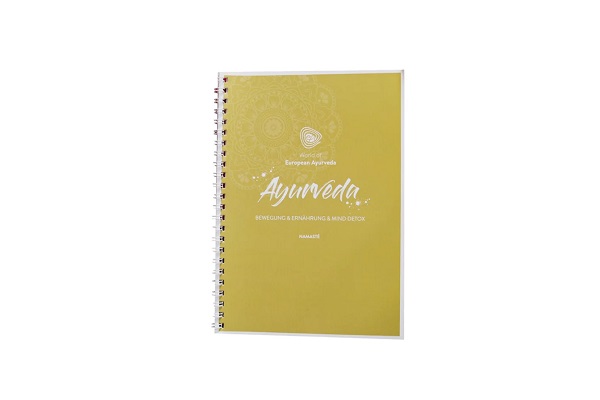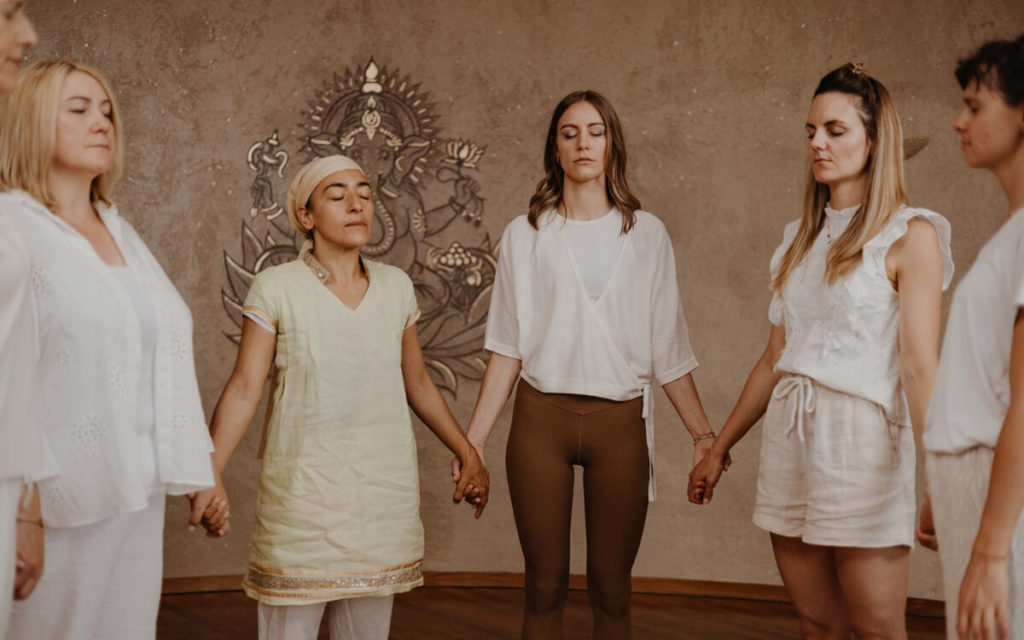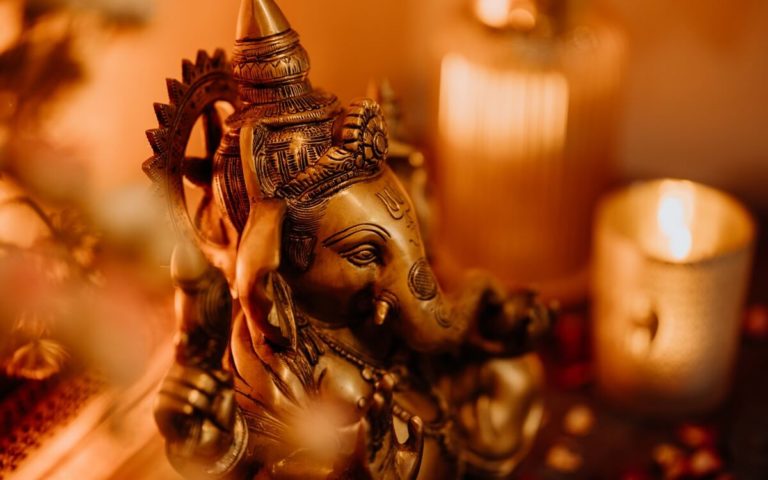In all cultures and religions of the world and also in modern psychology, the ability to forgive is of the utmost importance for inner healing. The following three forgiveness rituals for inner peace can help you to forgive from the bottom of your heart.
Forgiveness rituals: 3 instructions for inner healing and deep forgiveness
On our journey through life, we will consciously or unconsciously hurt others again and again, and they in turn will hurt us. Many of us react with sadness, anger, even feelings of revenge. And we are also unable to forgive ourselves for some of the decisions we make.


However, if we are unable to find closure, our thoughts are constantly revolving around the hurt, which means that these wounds to the soul are opened up again and again. With forgiveness rituals, you can achieve inner peace and finally heal.
In Ayurveda, people are viewed holistically in terms of their individual Dosha constitution. Body, mind and soul are always connected and all parts are equally important for health and longevity.
Tip: Reserve a place in your home for your daily meditations. You can also create a peaceful atmosphere with pleasant music, incense sticks and a candle, allowing you to concentrate fully on your rituals.
First, take the time to become aware of exactly which situations are bothering you and why. These can be specific disputes and life situations, character traits of other people or even vague feelings. Also reflect on what you have perhaps not yet forgiven yourself for.


Get active with the European Ayurveda® Diary Exercise, Nutrition & Mind Detox
All beginnings are difficult, you could say - or you could look at it from a different perspective and look forward to new experiences. This diary contains tasks and affirmations for 7 days. So that you feel comfortable and secure in your body!
Make notes at the beginning and write down memories from your soul. These can then serve as a basis for the following forgiveness rituals:
1. ho'oponopono - the Hawaiian forgiveness ritual
This ritual has a very long tradition among the Hawaiian people. Translated, Ho'oponopono means "to put something in order" or "to set something right".
However, it is becoming more and more widespread around the world. Originally, the ritual was used to resolve conflicts within extended families under the leadership of kahunas (shamans).
In this way, disagreements within a community could be resolved. The fundamental idea that all people are connected to each other makes this reconciliation ritual particularly beautiful. Because if you can forgive, you reconnect with yourself and with other people. Anger and revenge isolate you.


No matter what the conflict is - you can integrate the ritual into your everyday life and use it until you have internalized it - with the following four sentences:
I am sorry that ...
This is the phase of remorse or acceptance of the problem. You take responsibility for your own actions.
Please forgive me for ...
The forgiveness phase can be addressed to yourself as well as to another person. Ask for forgiveness sincerely and from the bottom of your heart.
I love myself/you ...
Love is an expression of connection with the whole universe and is incredibly strong. Allow the power of unconditional love and recognize the divine in yourself or in other people.
Thank you for ...
Thank yourself for being able to recognize and resolve the conflict.
In the concept of European Ayurveda®, mental and physical health are inextricably linked. This is why it is so important to free yourself from negative thoughts. This includes anger and resentment. Find out here in the video with European Ayurveda® pioneer Elisabeth Mauracher how you can transform these into something positive.
2. forgiveness with the REACH model
REACH forgiveness was developed by clinical psychologist and professor Dr. Everett L. Worthington Jr. of Virginia Commonwealth University as a method to support forgiveness. It is now used in various types of therapies or meditations in different areas.
The term REACH is an acronym that summarizes the five steps of the method.
R for Recall:
You actively remind yourself of the conflict or the injury. You are thus facing up to the fact and accepting the conflict.
E for Empathize:
Empathy is the ability to put yourself in someone else's shoes. This step is important in order to develop compassion for the person who has hurt you. What made them cross your boundaries? Perhaps this will help you to see the conflict in context.
A for Altruistic gift:
Now comes forgiveness as a selfless, altruistic gift. Remember your relief when you were forgiven yourself and how liberating it felt. Now you can pass on this wonderful gift yourself.
C for commit:
This is about commitment. For example, you can put it in writing that you have forgiven yourself or the person who has hurt you. This is a kind of help that maintains your forgiveness.
H for Hold on:
It can happen that the conflict rises up in you again or that you remember it. However, don't hold on to it, but remember that you have already forgiven. Basically, this step reminds you of all the previous steps. You have forgiven actively, consciously and with compassion and commitment. You can hold on to that.
You can incorporate your personal forgiveness ritual into your meditation exercises. Remember that you cannot change others, but you can always change yourself. This also includes changing your perspective. In this video, you will learn how you can find inner peace and thus gain more self-love and joy in life.
3. create your own personal forgiveness ritual
If you cannot identify with the rituals presented, you are always free to choose a ritual that you create yourself. The important thing is that you understand the process of forgiveness as an active action that comes from you and should be nurtured.
Imagine you cut your finger. You bleed, need a plaster and it takes time for the finger to heal completely. It is the same with injuries to the soul or when you are angry with yourself. Actively take time every day for your forgiveness ritual, e.g. during an evening meditation or after yoga.
The following mantras can help you to forgive:
- Today, I listen to my feelings. I am gentle with myself. I know that my feelings are my friends.
- Every new day is a new possibility. Yesterday is past and gone. Today is the first day of my future.
- I forgive all the people in my past and let them go, with love.
- If I forgive myself, I can forgive others more easily.
- I am ready for my healing. I am ready to forgive. Everything is good.
- I give myself a gift and free myself from the past. I arrive in the here and now with joy.
- If I make a mistake, I know that this is part of my learning process.
In which life situations can a forgiveness ritual help?
Forgiveness rituals can help you in many unpleasant and depressing situations. They support you in bringing mental and emotional closure to unpleasant situations. These include the following life situations, for example:
- Arguments with family, partners or friends
- Difficult interpersonal relationships
- injustice suffered
- Separations or deaths
- Subdued life energy(Ojas)
Such forgiveness rituals are particularly helpful if you are carrying emotional baggage. It is best to do them regularly and realize that nobody is perfect. They help you to be more mindful, understanding and enjoy life. Let go of resentful thoughts and gently take responsibility for your inner peace.


How can I regulate my nervous system? 4 tips from European Ayurveda®
An overstimulated nervous system is one of the most common causes of chronic complaints. Irritable bowel syndrome, exhaustion, hormonal imbalances, insomnia and migraines are common consequences. We show you how you can regulate your nervous system with European Ayurveda.






